Revolution: Russian Art 1917–1932
11 Feb - 17 Apr 2017

Boris Kustodiev,
The Bolshevik, 1920.
Oil on canvas. 101 x 140.5 cm. State Tretyakov Gallery, Moscow Photo © State Tretyakov Gallery.
The Bolshevik, 1920.
Oil on canvas. 101 x 140.5 cm. State Tretyakov Gallery, Moscow Photo © State Tretyakov Gallery.
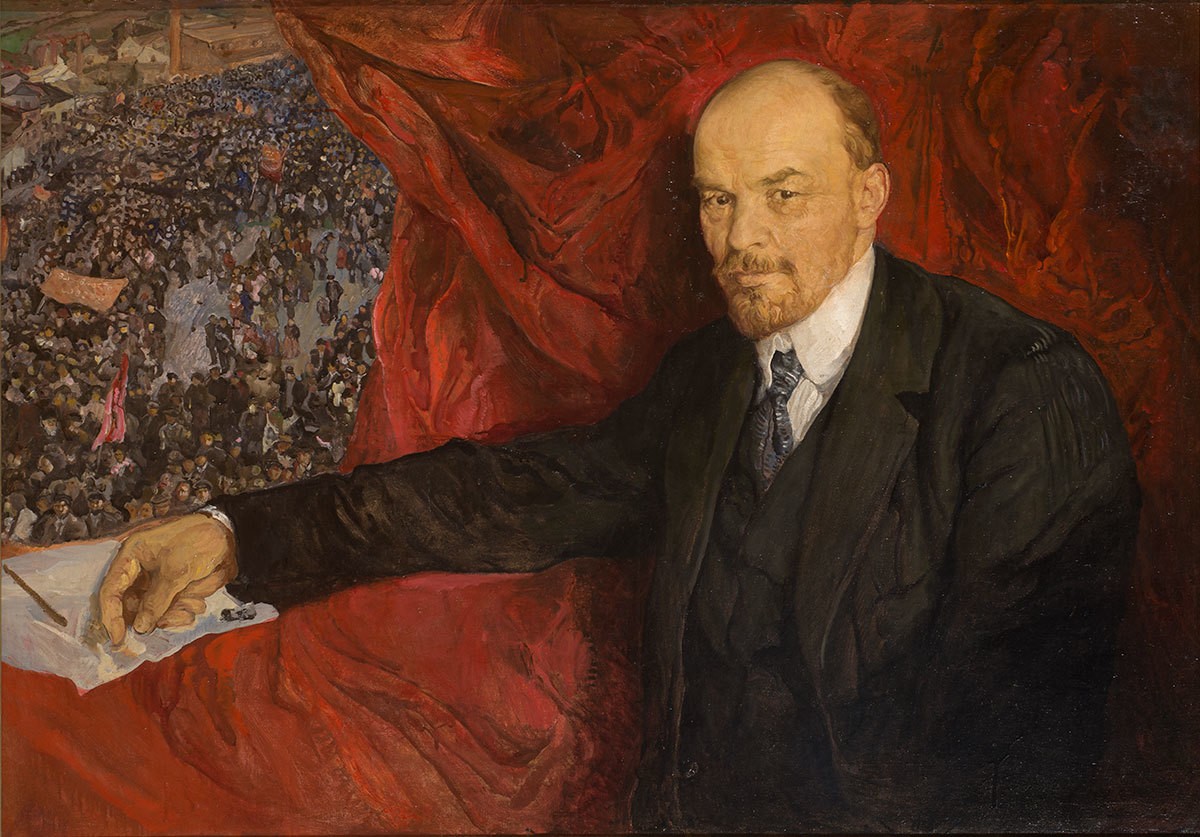
Isaak Brodsky,
V.I.Lenin and a Demonstration, 1919.
Oil on canvas. 90 x 135 cm. The State Historical Museum, Moscow Photo © Provided with assistance from the State Museum and Exhibition Center ROSIZO. The State Historical Museum, Moscow.
V.I.Lenin and a Demonstration, 1919.
Oil on canvas. 90 x 135 cm. The State Historical Museum, Moscow Photo © Provided with assistance from the State Museum and Exhibition Center ROSIZO. The State Historical Museum, Moscow.
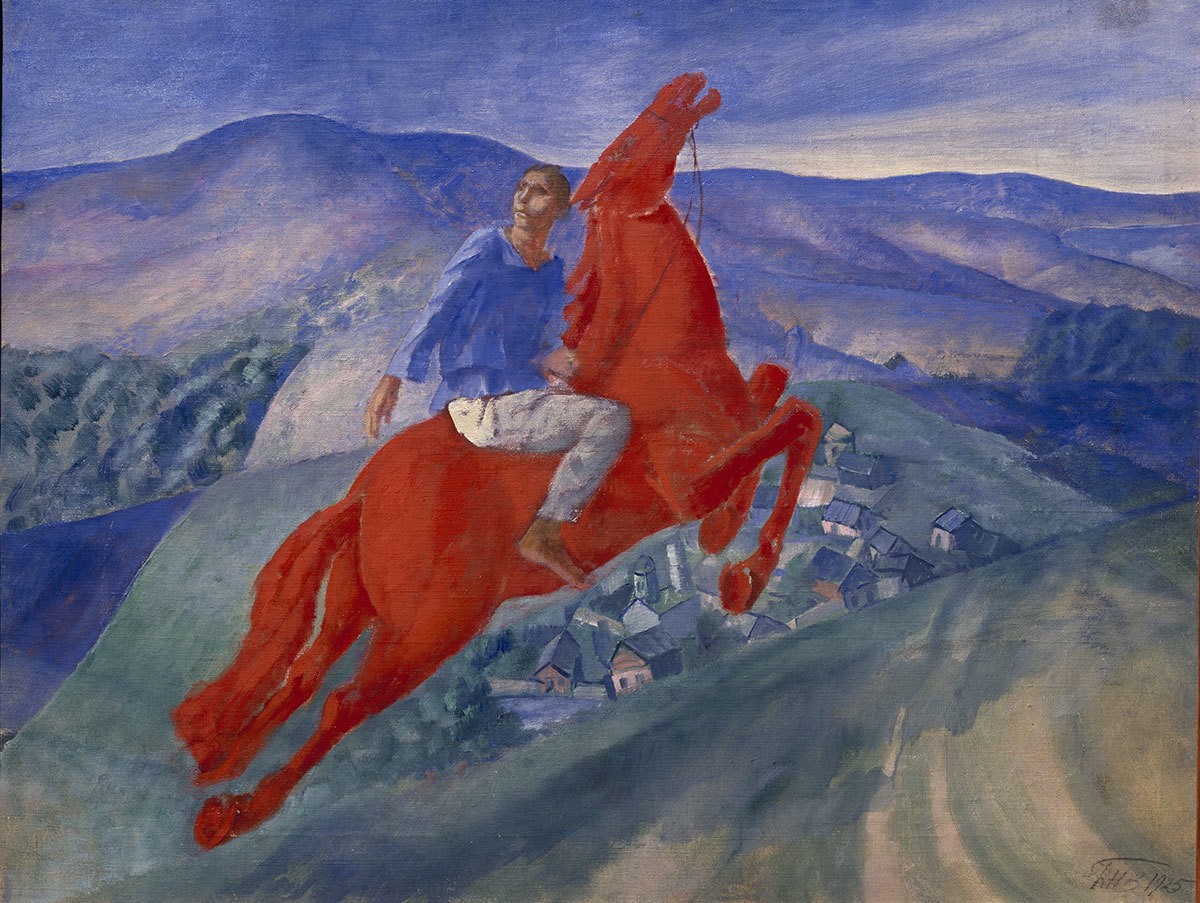
Kuzma Petrov-Vodkin,
Fantasy, 1925.
Oil on canvas. 50 x 64.5 cm. State Russian Museum, St Petersburg Photo © 2017, State Russian Museum, St Petersburg.
Fantasy, 1925.
Oil on canvas. 50 x 64.5 cm. State Russian Museum, St Petersburg Photo © 2017, State Russian Museum, St Petersburg.

Andrey Golubev,
Red spinner, 1930.
Cotton Print, direct printing chintz. 17.5 x 27 cm. The Burilin Ivanovo Museum of Local History Photo © Provided with assistance from the State Museum and Exhibition Center ROSIZO.
Red spinner, 1930.
Cotton Print, direct printing chintz. 17.5 x 27 cm. The Burilin Ivanovo Museum of Local History Photo © Provided with assistance from the State Museum and Exhibition Center ROSIZO.
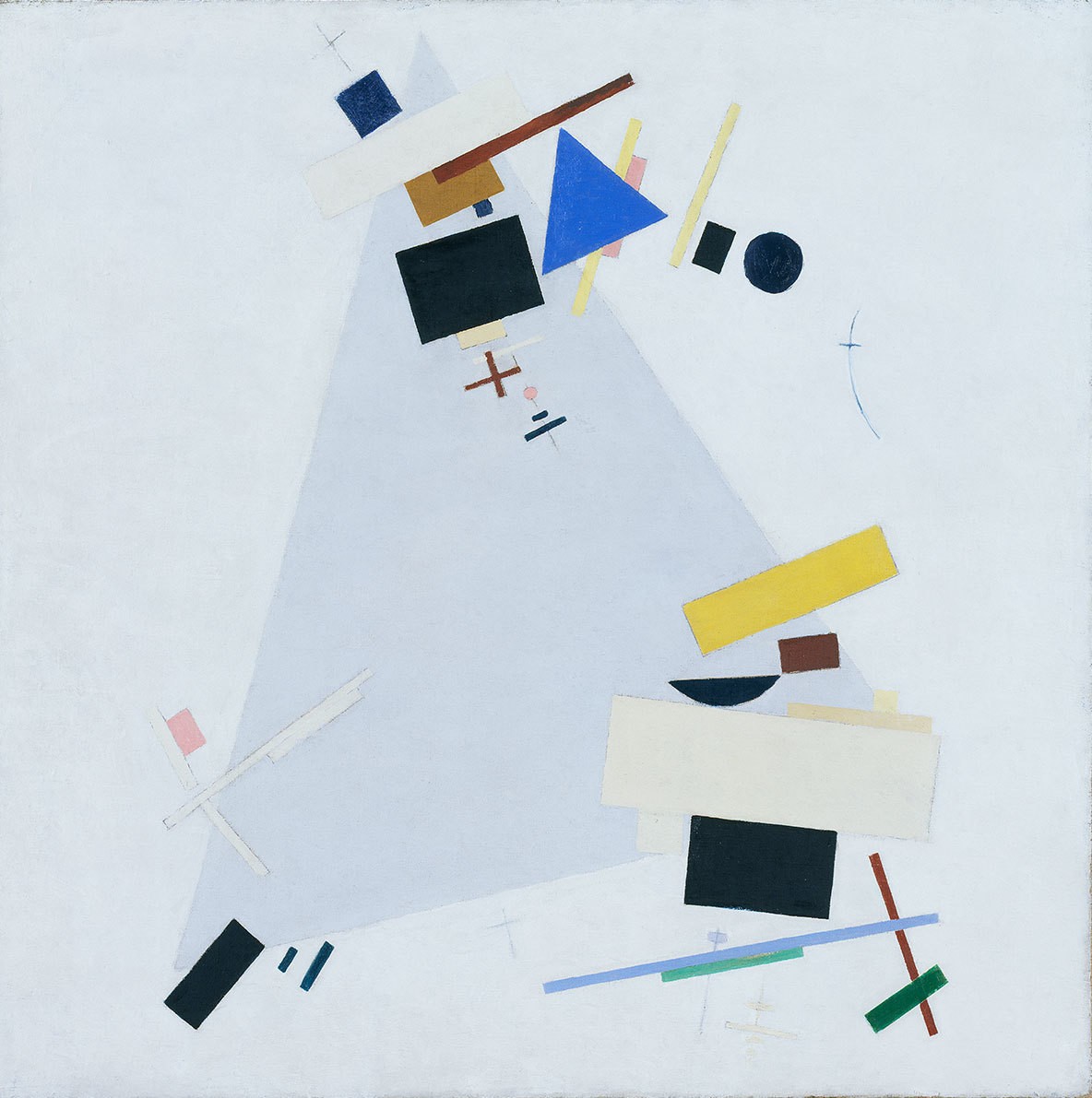
Kazimir Malevich,
Dynamic Suprematism Supremus, c. 1915.
Oil on canvas. 80.3 x 80 cm. Tate: Purchased with assistance from the Friends of the Tate Gallery 1978 Photo © Tate, London 2016.
Dynamic Suprematism Supremus, c. 1915.
Oil on canvas. 80.3 x 80 cm. Tate: Purchased with assistance from the Friends of the Tate Gallery 1978 Photo © Tate, London 2016.
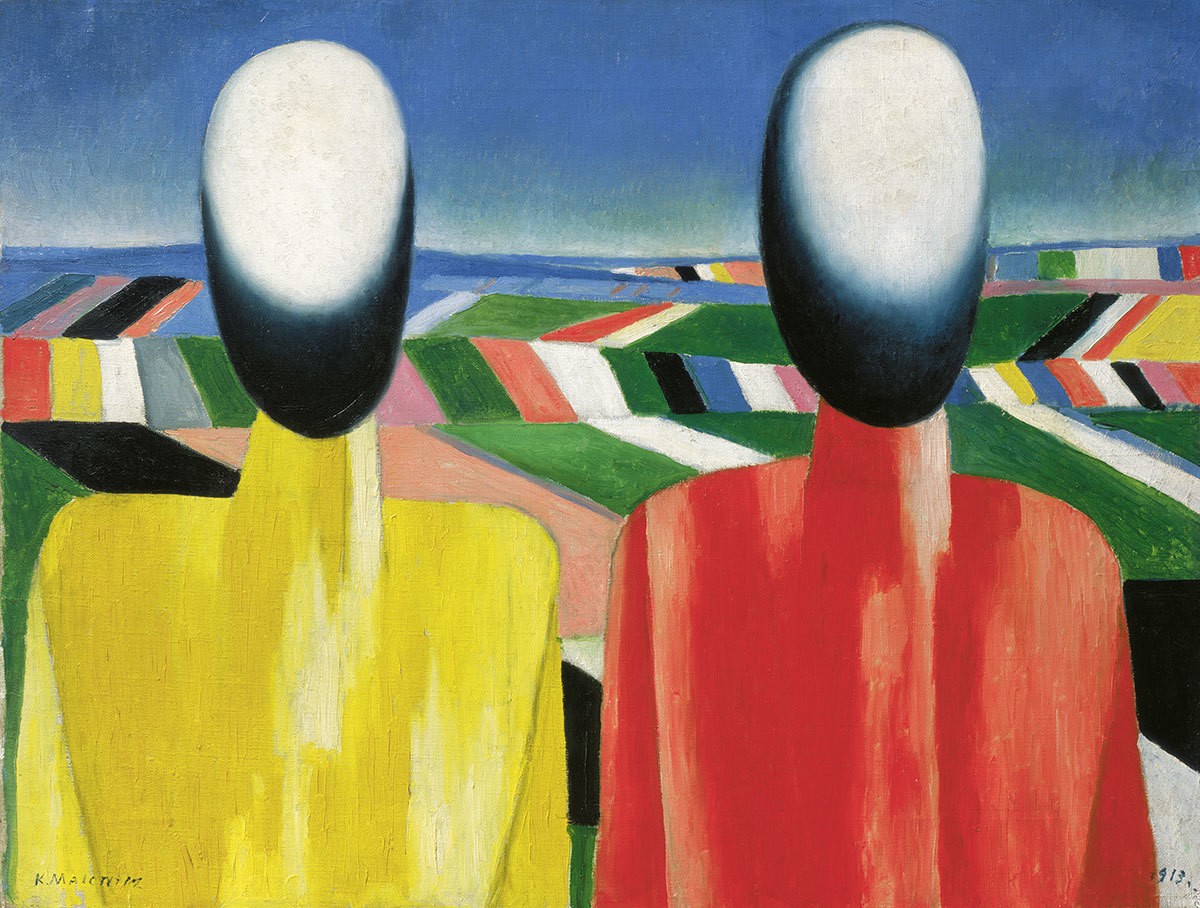
Kazimir Malevich,
Peasants, c. 1930.
Oil on canvas. 53 x 70 cm. State Russian Museum, St Petersburg Photo © 2017, State Russian Museum, St Petersburg.
Peasants, c. 1930.
Oil on canvas. 53 x 70 cm. State Russian Museum, St Petersburg Photo © 2017, State Russian Museum, St Petersburg.

Wassily Kandinsky,
Blue Crest (detail), 1917.
Oil on canvas. 133 x 104 cm. State Russian Museum, St. Petersburg Photo © 2016, State Russian Museum, St. Petersburg.
Blue Crest (detail), 1917.
Oil on canvas. 133 x 104 cm. State Russian Museum, St. Petersburg Photo © 2016, State Russian Museum, St. Petersburg.
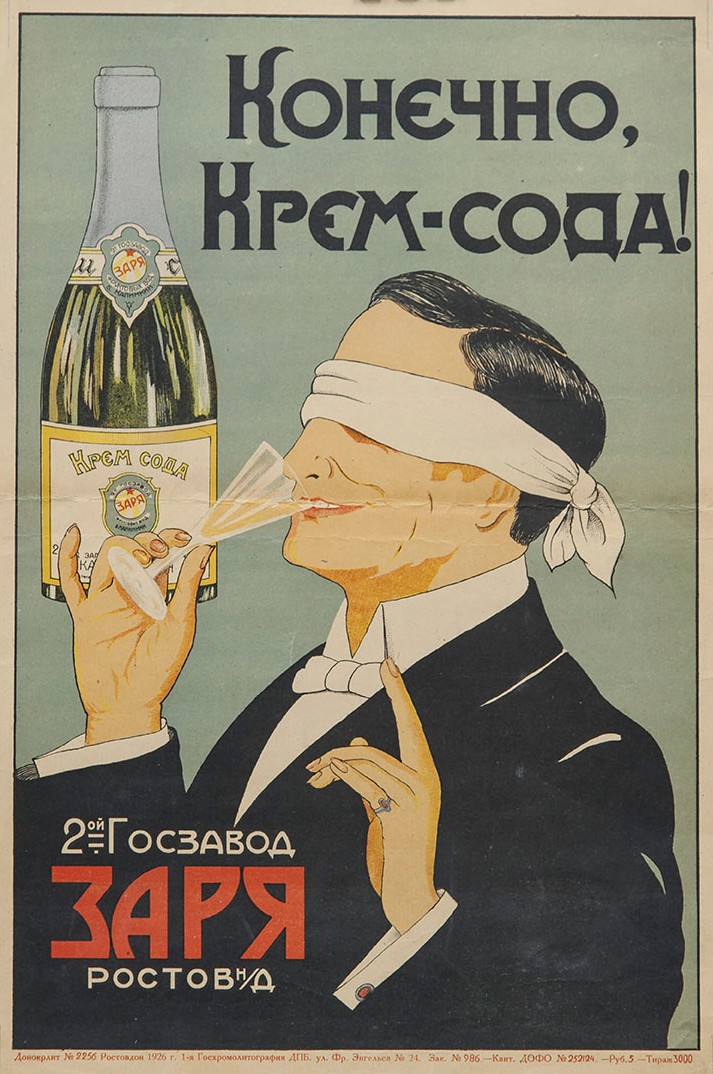
Unknown artist,
Advertisement 'Of course, cream-soda!', 1926.
Paper, chromolithograph. 46 x 29.5 cm. The State Museum of the History of St Petersburg Photo © Provided with assistance from the State Museum and Exhibition Center ROSIZO.
Advertisement 'Of course, cream-soda!', 1926.
Paper, chromolithograph. 46 x 29.5 cm. The State Museum of the History of St Petersburg Photo © Provided with assistance from the State Museum and Exhibition Center ROSIZO.
REVOLUTION: RUSSIAN ART 1917–1932
11 February — 17 April 2017
One hundred years on from the Russian Revolution, this powerful exhibition explores one of the most momentous periods in modern world history through the lens of its groundbreaking art.
Please note: online tickets have now sold out. A limited number of tickets are available to buy in person at the box office. At busy times queuing may be necessary.
Renowned artists including Kandinsky, Malevich, Chagall and Rodchenko were among those to live through the fateful events of 1917, which ended centuries of Tsarist rule and shook Russian society to its foundations.
Amidst the tumult, the arts thrived as debates swirled over what form a new “people’s” art should take. But the optimism was not to last: by the end of 1932, Stalin’s brutal suppression had drawn the curtain down on creative freedom.
Taking inspiration from a remarkable exhibition shown in Russia just before Stalin’s clampdown, we will mark the historic centenary by focusing on the 15-year period between 1917 and 1932 when possibilities initially seemed limitless and Russian art flourished across every medium.
This far-ranging exhibition will – for the first time – survey the entire artistic landscape of post-Revolutionary Russia, encompassing Kandinsky’s boldly innovative compositions, the dynamic abstractions of Malevich and the Suprematists, and the emergence of Socialist Realism, which would come to define Communist art as the only style accepted by the regime.
We will also include photography, sculpture, filmmaking by pioneers such as Eisenstein, and evocative propaganda posters from what was a golden era for graphic design. The human experience will be brought to life with a full-scale recreation of an apartment designed for communal living, and with everyday objects ranging from ration coupons and textiles to brilliantly original Soviet porcelain.
Revolutionary in their own right, together these works capture both the idealistic aspirations and the harsh reality of the Revolution and its aftermath.
11 February — 17 April 2017
One hundred years on from the Russian Revolution, this powerful exhibition explores one of the most momentous periods in modern world history through the lens of its groundbreaking art.
Please note: online tickets have now sold out. A limited number of tickets are available to buy in person at the box office. At busy times queuing may be necessary.
Renowned artists including Kandinsky, Malevich, Chagall and Rodchenko were among those to live through the fateful events of 1917, which ended centuries of Tsarist rule and shook Russian society to its foundations.
Amidst the tumult, the arts thrived as debates swirled over what form a new “people’s” art should take. But the optimism was not to last: by the end of 1932, Stalin’s brutal suppression had drawn the curtain down on creative freedom.
Taking inspiration from a remarkable exhibition shown in Russia just before Stalin’s clampdown, we will mark the historic centenary by focusing on the 15-year period between 1917 and 1932 when possibilities initially seemed limitless and Russian art flourished across every medium.
This far-ranging exhibition will – for the first time – survey the entire artistic landscape of post-Revolutionary Russia, encompassing Kandinsky’s boldly innovative compositions, the dynamic abstractions of Malevich and the Suprematists, and the emergence of Socialist Realism, which would come to define Communist art as the only style accepted by the regime.
We will also include photography, sculpture, filmmaking by pioneers such as Eisenstein, and evocative propaganda posters from what was a golden era for graphic design. The human experience will be brought to life with a full-scale recreation of an apartment designed for communal living, and with everyday objects ranging from ration coupons and textiles to brilliantly original Soviet porcelain.
Revolutionary in their own right, together these works capture both the idealistic aspirations and the harsh reality of the Revolution and its aftermath.
